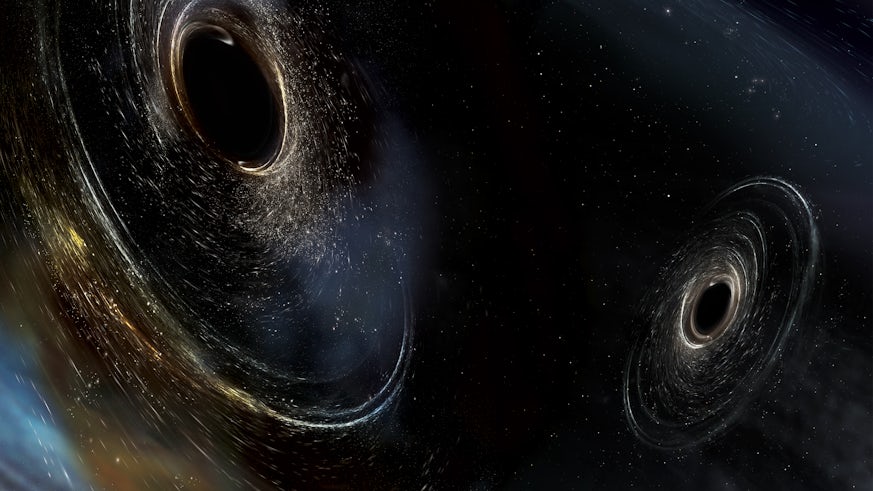First joint detection of gravitational waves
27 September 2017

LIGO and Virgo detectors join forces to detect gravitational waves form merging black holes
Cardiff University scientists are celebrating a major milestone in the ongoing hunt for gravitational waves today as the detection of the first ever signal by both LIGO and Virgo detectors has been announced.
The Advanced LIGO and Virgo detectors have both measured gravitational waves from two merging black holes over 1.8 billion light-years away from Earth. The detection, known as GW170814, was made on 14 August 2017 by LIGO’s two detectors in Louisiana and Washington and Virgo’s updated detector in Pisa, Italy.
The two black holes had masses about 31 and 25 times the mass of the Sun and, once merged, had a mass around 53 times that of the Sun.
This is the first time that gravitational waves have been detected by Virgo, but marks the fourth detection by LIGO.
With Virgo joining the hunt for gravitational waves, scientists are able to examine the sky with much more precision and potentially uncover many more of the extraordinary mysteries of the Universe.

“Adding Virgo to the network has allowed us to pinpoint where the signal came from ten times better than before. This is an amazing improvement in the precision of gravitational-wave astronomy.”
Gravitational waves are tiny ripples in space and time that are emitted from violent cosmic events, such as exploding stars and merging black holes. Gravitational waves carry information about their dramatic origins and about the nature of gravity that cannot otherwise be obtained.
Professor Patrick Sutton, head of the Gravitational Physics Group, said: “Combining the data from LIGO and Virgo allows us, for the first time, to directly measure the polarisation of gravitational waves — the pattern by which they stretch and squeeze spacetime. We’ve used this to test and verify Einstein’s theory of gravity in a fundamentally new way.”
Research undertaken at Cardiff University has laid the foundations for how we go about detecting gravitational waves with the development of novel algorithms and software that have now become standard search tools for detecting the elusive signals.
The Gravitational Physics Group also includes world-leading experts in the collision of black holes, who have produced large-scale computer simulations to imitate these violent cosmic events and predict how gravitational waves are emitted as a consequence. These calculations were instrumental in decoding the three gravitational-wave signals that LIGO has already observed.
On 1 August 2017, the updated Virgo detector, known as Advanced Virgo, joined the hunt for gravitational waves at the European Gravitational Observatory (EGO) in Cascina, near Pisa, Italy.
